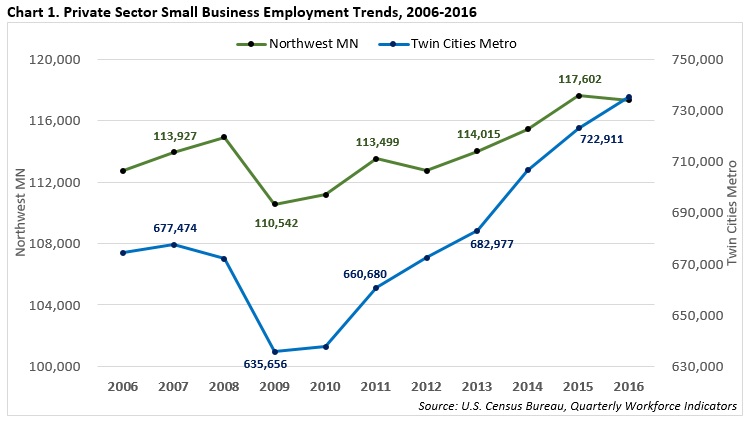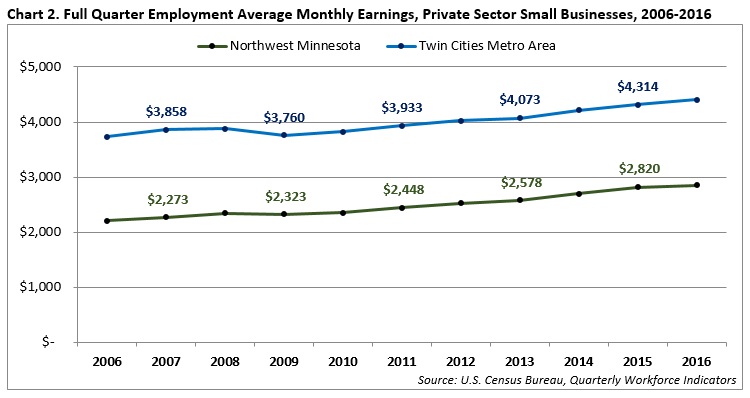 The presence of such industry powerhouses as Polaris, Arctic Cat and New Flyer make Northwest Minnesota a hub of transportation equipment manufacturing.
The presence of such industry powerhouses as Polaris, Arctic Cat and New Flyer make Northwest Minnesota a hub of transportation equipment manufacturing.
From wheat and potatoes to soybeans and sugar beets, the region is a major producer and processor of food staples and specialty agricultural products.
Want the freshest data delivered by email? Subscribe to our regional newsletters.
12/12/2017 12:04:56 PM
Chet Bodin
To say small businesses are vital to Minnesota's economy is a major understatement. Small businesses are the primary source of employment statewide, and in Greater Minnesota they provide nearly 60 percent of all private-sector jobs. According to the U.S. Small Business Administration, a small business employs fewer than 500 employees. Ninety-four percent of businesses in Minnesota are even smaller, employing less than fifty employees.
In Northwest Minnesota, small businesses are the economy. In 2015, 99.9 percent of all businesses in the region fit the definition (based on number of employees), and small businesses account for two-thirds of area private-sector employment. Providing the other one-third of regional jobs, large employers in Northwest Minnesota play a pivotal role as well, but even they often started as small businesses. As the bread and butter of economic success, it is important to understand how small businesses were affected by the Great Recession, and how they may be affected by the demographic changes ahead.

Despite the difficult recessionary period, employment and average wages at small businesses increased in Northwest Minnesota from 2006-2016. Compared to other parts of the state, there are some unique trends found in the region. In essence, small businesses declined less and rebounded more slowly than other parts of the state from 2006-2016, but simultaneously increased wages at a higher rate (Table 2).
There is a stark contrast between trends in Northwest Minnesota and those in the Twin Cities Metro Area, where employment grew twice as fast but the increase in average monthly wages was much slower. This contrast is evident between all of Greater Minnesota and the metro area, but even more pronounced in Northwest Minnesota.

Although employment grew faster in the Twin Cities metro area from 2006-2016, it also suffered greater losses during the recession. For example, from 2007-2009, employment at private-sector small businesses decreased 6.2 percent in the metro compared to only 3.0 percent in Northwest Minnesota (Chart 1). Not only did the recession hit small businesses in Northwest Minnesota less, but the effects were less immediate. The flip side was that the recovery took longer, even though it did not have as far to come back from. Together it appears that the metro area has been more susceptible to wider economic fluctuation.

As noted, average monthly earnings grew faster in Northwest Minnesota than the Twin Cities from 2006-2016 largely due to increases from 2007-2009, while metro area monthly earnings declined by nearly $100 during the economic downturn. Still, average monthly wages in Northwest Minnesota were approximately 64 percent of those in the metro area, despite growing at nearly twice the rate from 2006-2016 (Chart 2).

Contact Chet Bodin.